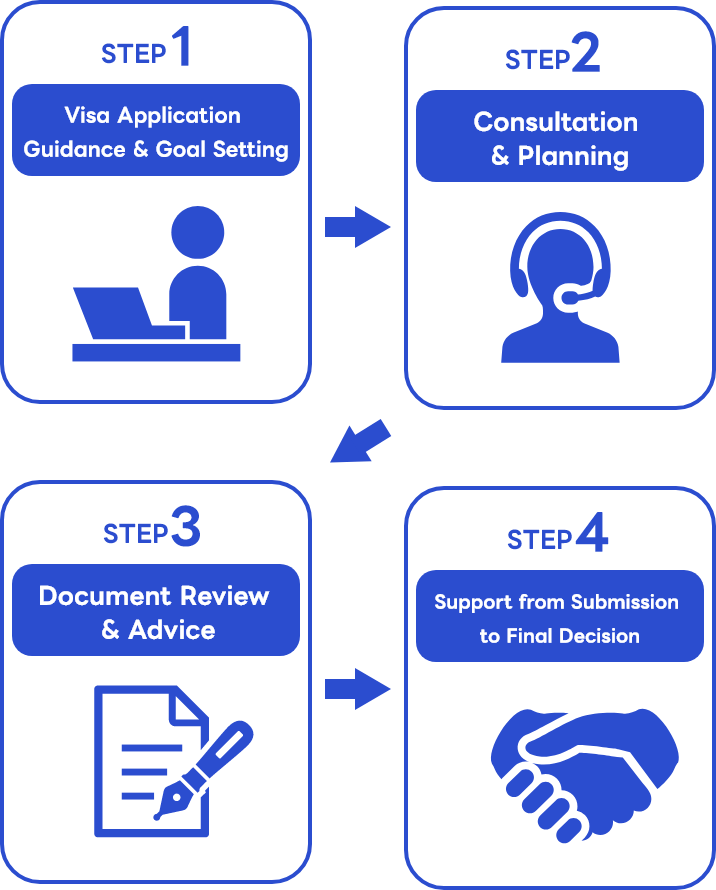Canada’s 2026–2028 Immigration Levels Plan: Major Expansion of PNPs, Reduction in Study and Work Permits
Date Posted:November 6, 2025
Last Updated:November 13, 2025
Index
- 1 What Is the Immigration Levels Plan?
- 2 Permanent Resident Targets by Category
- 3 Fewer Temporary Residents: Decline in Work and Study Permits
- 4 Overall Permanent Resident Targets
- 5 Expansion of Provincial Nominee Programs (PNPs)
- 6 Work Permit Systems in Canada
- 7 Background and Policy Reasons for Reducing Temporary Residents
- 8 Summary
The Government of Canada has released its new Immigration Levels Plan (2026–2028), outlining the country’s targets for both permanent and temporary residents over the next three years.
In this plan, Canada will significantly expand the Provincial Nominee Programs (PNPs) which allow provinces to nominate candidates for permanent residence while reducing the number of work and study permits, particularly those issued through LMIA-based programs.
In 2026, Canada plans to admit 91,500 new permanent residents through PNPs, up from 55,000 the previous year an increase of approximately 66%.
What Is the Immigration Levels Plan?
The Immigration Levels Plan is a legally required policy document that must be tabled in Parliament every year by November 1.
It sets immigration targets for the upcoming year and projections for the following two years.
For the first time last year, the plan also included targets for temporary residents such as international students and foreign workers.
Permanent Resident Targets by Category
The Government of Canada has presented its immigration targets for 2026 and 2027, covering permanent residents, work permits, and study permits.
While the number of economic immigrants will remain stable or slightly increase, the targets for temporary programs such as work and study permits will decline.
| Category | 2026 | 2027 |
|---|---|---|
| Express Entry (CEC, FSW, FST) | 109,000 | 111,000 |
| Provincial Nominee Programs (PNP) | 91,500 | 92,500 |
| Atlantic Immigration Program | 4,000 | 4,000 |
| Other Skills-Based Programs | 8,175 | 8,775 |
| Start-Up and Entrepreneur Programs | 500 | 500 |
This content is quoted from the Government of Canada’s official announcement, Immigration Levels Plan 2026–2028.
In the 2026 targets, the number of admissions through the Provincial Nominee Program (PNP) has come very close to the number of admissions through Express Entry. This indicates a return to a system in which provincial governments play a leading role in immigration strategy. Beginning in 2026, it will be important for applicants to consider not only federal programs but also provincial pathways.
Fewer Temporary Residents: Decline in Work and Study Permits
In the new Immigration Levels Plan for 2026–2028, the total number of temporary residents, including foreign workers and international students, will be significantly reduced.
Work Permits
| Type | 2026 | 2027 | 2028 |
|---|---|---|---|
| LMIA-Exempt Work Permits (IMP) | 170,000 | 170,000 | 170,000 |
| LMIA-Required Work Permits (TFWP) | 60,000 | 50,000 | 50,000 |
| Total Work Permits | 230,000 | 220,000 | 220,000 |
In the 2026 targets, the number of admissions through the Provincial Nominee Program (PNP) has come very close to the number of admissions through Express Entry. This indicates a return to a system in which provincial governments play a leading role in immigration strategy. Beginning in 2026, it will be important for applicants to consider not only federal programs but also provincial pathways.
Study Permits
| Type | 2026 | 2027 | 2028 |
|---|---|---|---|
| Study Permits | 155,000 | 150,000 | 150,000 |
Total Temporary Residents (Work and Study Combined)
| Category | 2026 | 2027 | 2028 |
|---|---|---|---|
| Temporary Residents | 385,000 | 370,000 | 370,000 |
Comparison with 2025 Targets
| Category | 2025 | 2026 | Change | Percent Change |
|---|---|---|---|---|
| LMIA-Exempt Work Permits | 128,700 | 170,000 | +41,300 | +24.3% |
| LMIA-Required Work Permits | 82,000 | 60,000 | -22,000 | -26.8% |
| Study Permits | 305,900 | 155,000 | -150,900 | -49.3% |
Actual arrivals have already declined. As of July 2025, the number of international students dropped by 55 percent year over year, and the number of work permit holders decreased by 40 percent. One of the key reasons for the sharp decline in study permits is the federal government’s introduction of a cap on the number of PALs that schools are allowed to issue, which directly limits the number of study permits. In 2026, the cap will be set at half of the 2025 level. As a result, even if students wish to study in Canada, some may be unable to apply because institutional quotas are already full. Early planning for study abroad is becoming increasingly important.
This content is quoted from the Government of Canada’s official announcement, Immigration Levels Plan 2026–2028.
Overall Permanent Resident Targets
The total number of new permanent residents will remain nearly unchanged from 2026 onward.
While the economic immigration category will slightly increase, the family and refugee categories will decline.
Overall, the total annual target will stay at 380,000 new permanent residents from 2026 to 2028.
In addition, the Government of Canada aims to gradually raise the proportion of French-speaking immigrants outside Quebec.
Permanent Resident Targets (2026–2028)
| Category | 2026 | 2027 | 2028 |
|---|---|---|---|
| Economic Class (Skills and Education) | 239,800 | 244,700 | 244,700 |
| Family Class (Spouses and Relatives) | 84,000 | 81,000 | 81,000 |
| Refugees and Others | 56,200 | 54,300 | 54,300 |
| Total Permanent Residents | 380,000 | 380,000 | 380,000 |
The 2026 immigration targets announced by the government are not projections but confirmed operational numbers. When planning an application, it is most realistic to base your strategy on the 2026 allocation. In contrast, the 2027 and 2028 targets may be revised in future Immigration Levels Plans.
Comparison with 2025
| Category | 2025 | 2026 | Change | Percent Change |
|---|---|---|---|---|
| Economic Class | 232,150 | 239,800 | +7,650 | +3.3% |
| Family Class | 94,500 | 84,000 | -10,500 | -11.1% |
| Refugees and Others | 68,350 | 56,200 | -12,150 | -17.8% |
| Total | 395,000 | 380,000 | -15,000 | -3.8% |
French-Speaking Immigrants Outside Quebec
| Year | Target | Share of Total |
|---|---|---|
| 2026 | 30,267 | 9% |
| 2027 | 31,825 | 9.5% |
| 2028 | 35,175 | 10.5% |
The gradual increase in the target number of French-speaking immigrants outside Quebec demonstrates that French-language proficiency has become a critical factor in permanent residence applications. Supporting French-speaking communities is a major policy priority for the federal government. In Express Entry, the advantage given to candidates with CLB 7 or higher in French is expected to continue for several years.
This content is quoted from the Government of Canada’s official announcement, Immigration Levels Plan 2026–2028.
Expansion of Provincial Nominee Programs (PNPs)
The Provincial Nominee Program (PNP) allows provinces and territories to nominate candidates for permanent residence based on local labor market needs.
With the latest expansion, new opportunities will open for the following groups:
- Individuals already registered in a PNP who have not yet received an Invitation to Apply (ITA)
- Applicants with CRS scores below the usual Express Entry cut-off
- Those who do not meet the Canadian Experience Class (CEC) requirements
- Workers in lower-skilled occupations (TEER 4 and 5)
- Business owners and investors seeking permanent residence through entrepreneurship streams
Although PNP quotas were temporarily cut by 50 percent in early 2025, the government later reversed course and increased allocations for all provinces except Ontario and Prince Edward Island.
This policy change, led by Prime Minister Mark Carney and Immigration Minister Lena Diab, represents a major shift from the approach taken under the previous Trudeau and Miller administration.
The recent expansion of PNPs signals a strong preference for individuals who are already in Canada working or studying, rather than new applicants outside the country. In other words, the system increasingly supports a clear pathway of transitioning from temporary residence to permanent residence. For those who are already working or studying in Canada with the goal of permanent residency, this period presents new opportunities.
Work Permit Systems in Canada
The LMIA-based work permit (TFWP) allows employers to hire foreign workers when no Canadians or permanent residents are available.
Each application requires an LMIA (Labour Market Impact Assessment) from Employment and Social Development Canada (ESDC).
This is a closed work permit tied to a specific employer and occupation.
The LMIA-exempt work permit (IMP) facilitates employment that brings cultural, social, or economic benefits to Canada.
This includes the following categories:
- Working Holiday Visa (IEC)
- Bridging Open Work Permit (BOWP)
- Spousal Open Work Permit (SOWP)
- Post-Graduation Work Permit (PGWP)
- CPTPP Work Permit
- Intra-Company Transfer (ICT)
Many IMP permits are open work permits that allow the holder to work for any employer.
This flexibility enables the government to adjust eligibility and maintain greater control over the composition of temporary workers.
Among LMIA-exempt work permits, Japanese nationals should pay particular attention to the CPTPP Work Permit and the Intra-Company Transfer (ICT) permit. Both pathways require appropriate education, work experience, and specialized skills. For many Japanese applicants, these two permits and the Working Holiday Visa are the most realistic options for obtaining status without relying on an LMIA.
Background and Policy Reasons for Reducing Temporary Residents
The Canadian government aims to reduce the proportion of temporary residents to 5 percent of the total population by the end of 2027.
By 2025, the number of international students and temporary workers had already declined significantly.
Key Policy Changes Introduced Since 2024
- Cap on the number of study permit applications
- Elimination of PGWP eligibility for certain college graduates
- Stricter language and program requirements for PGWP applicants
- Limiting spousal work permits for international students to PhD, master’s, and specialized programs
- Restricting spousal work permits for foreign workers to specific occupations
- Suspension of low-wage LMIA processing in regions with unemployment above 6 percent
The effects of these changes will take time to be fully reflected in population figures.
For example, the reduction in study permits is expected to lead to fewer PGWP holders starting around 2029, once current students complete multi-year programs.
By contrast, restrictions on low-wage LMIA processing are expected to have an immediate impact within one to two years because of the short validity of these permits.
As the number of study permits decreases, the number of Post-Graduation Work Permits (PGWPs) will also decline in the coming years. This reduction will become more noticeable starting around 2029 and will have a significant effect on both the labor market and permanent residence pathways. The model of “study first, then apply for permanent residence” is entering a period of major restructuring.
Summary
The new Immigration Levels Plan clearly demonstrates the government’s policy goal of stabilizing immigration through permanent pathways while limiting temporary stays.
The expansion of PNPs will create new opportunities for foreign workers and international students aiming for permanent residence, while the environment for short-term stays through study and LMIA-based work permits is expected to become increasingly competitive.
Since 2025, Canada’s immigration system has continued to emphasize gaining experience inside Canada before applying for permanent residence, rather than applying directly from overseas. Although the reduction in study permits and LMIA-based work permits is substantial, the first step is to secure a valid permit to come to Canada. For those who are already in Canada, building a strategy that matches the current environment will have a major impact on future success in immigration.
Related Columns

Date Posted:October 28, 2025
AI Answers About Canadian Immigration Are Not Always Correct | CIC News Reveals How Much AI Gets Wrong

Date Posted:October 27, 2025
What to Keep in Mind When Accepting a Job Offer for Employer-Driven Permanent Residency Programs

Date Posted:October 22, 2025
Refugee Applications with Visa JP Canada – Handled by a Consultant with a IRB License
Related News
Looking to obtain permanent residence or a visa?
Consult with us now!

Applying for permanent residence or a visa to Canada on your own can be overwhelming due to the large number of required documents, and you may feel uncertain about whether everything is correct. However, if you're serious about immigrating to Canada, we strongly recommend seeking the support of an immigration consultant. There are many pathways to obtaining permanent residence, depending on factors such as your age, occupation, and family status. With the help of an expert, you can ensure that you plan the right approach tailored to your specific situation.
A professional immigration consultant will help solve your concerns
Get a free Counseling now
From immigration planning to application submission,
everything is completed with Visa JP Canada


Consulting with an immigration consultant makes the process clearer and much smoother. You’ll feel more confident with document submissions and procedures, significantly reducing the risk of mistakes. Take the first step toward your Canadian dream with the guidance of an expert.



